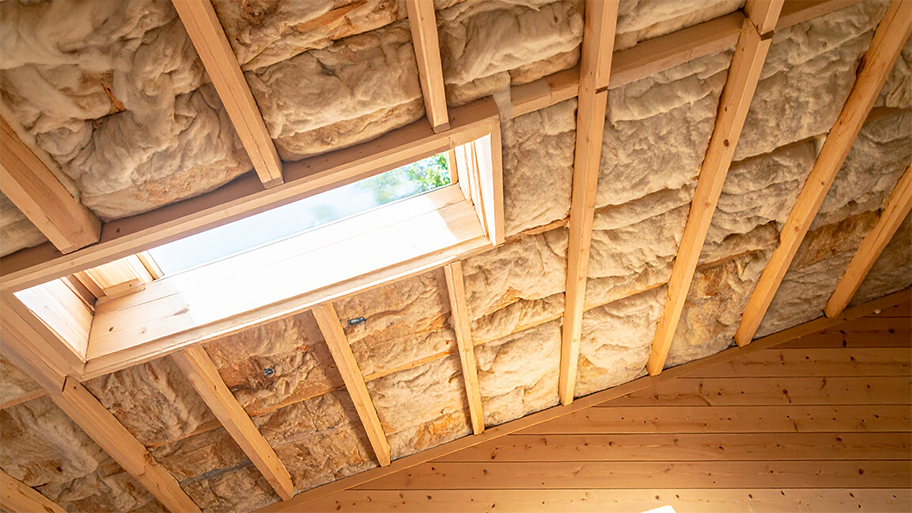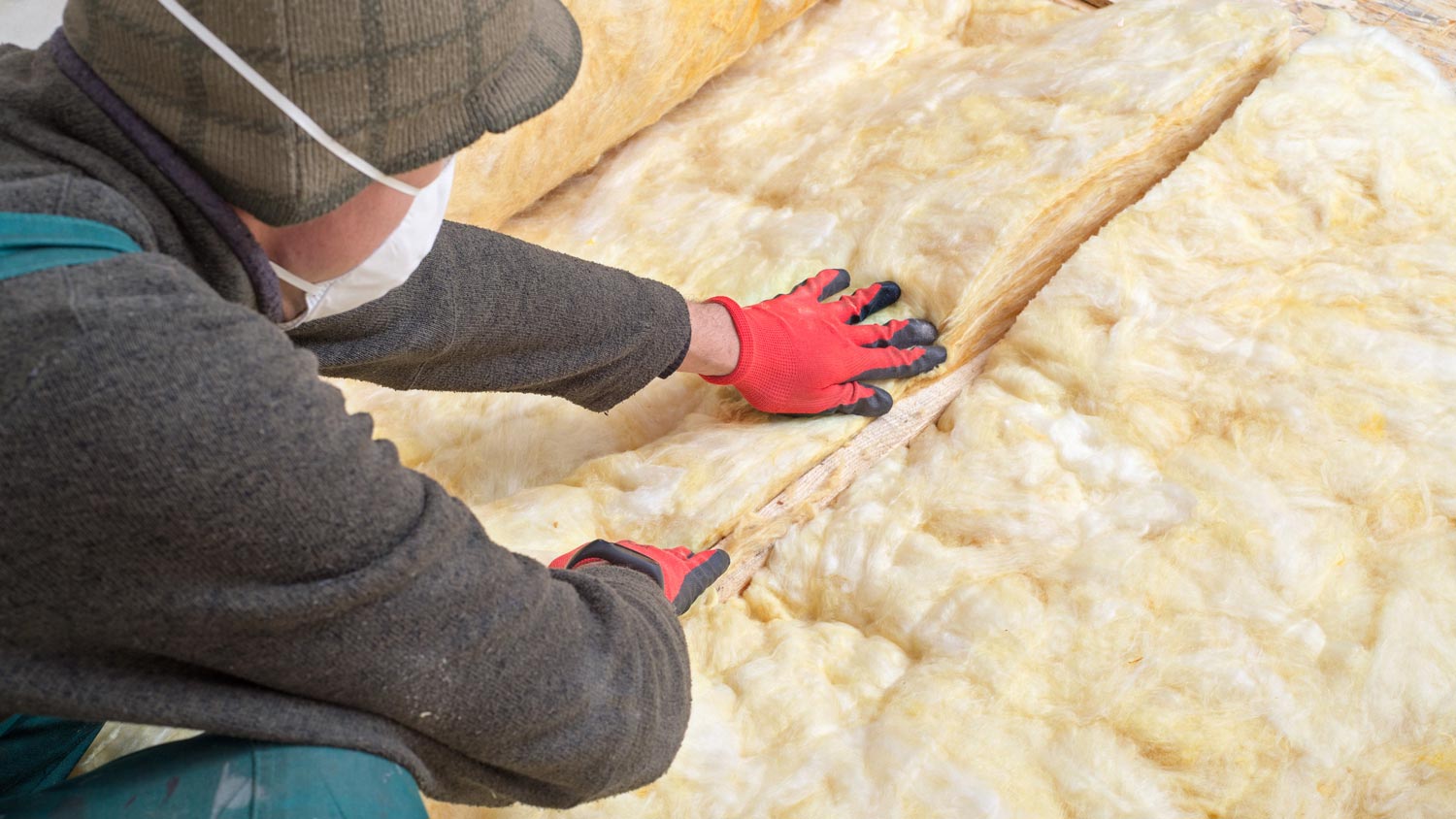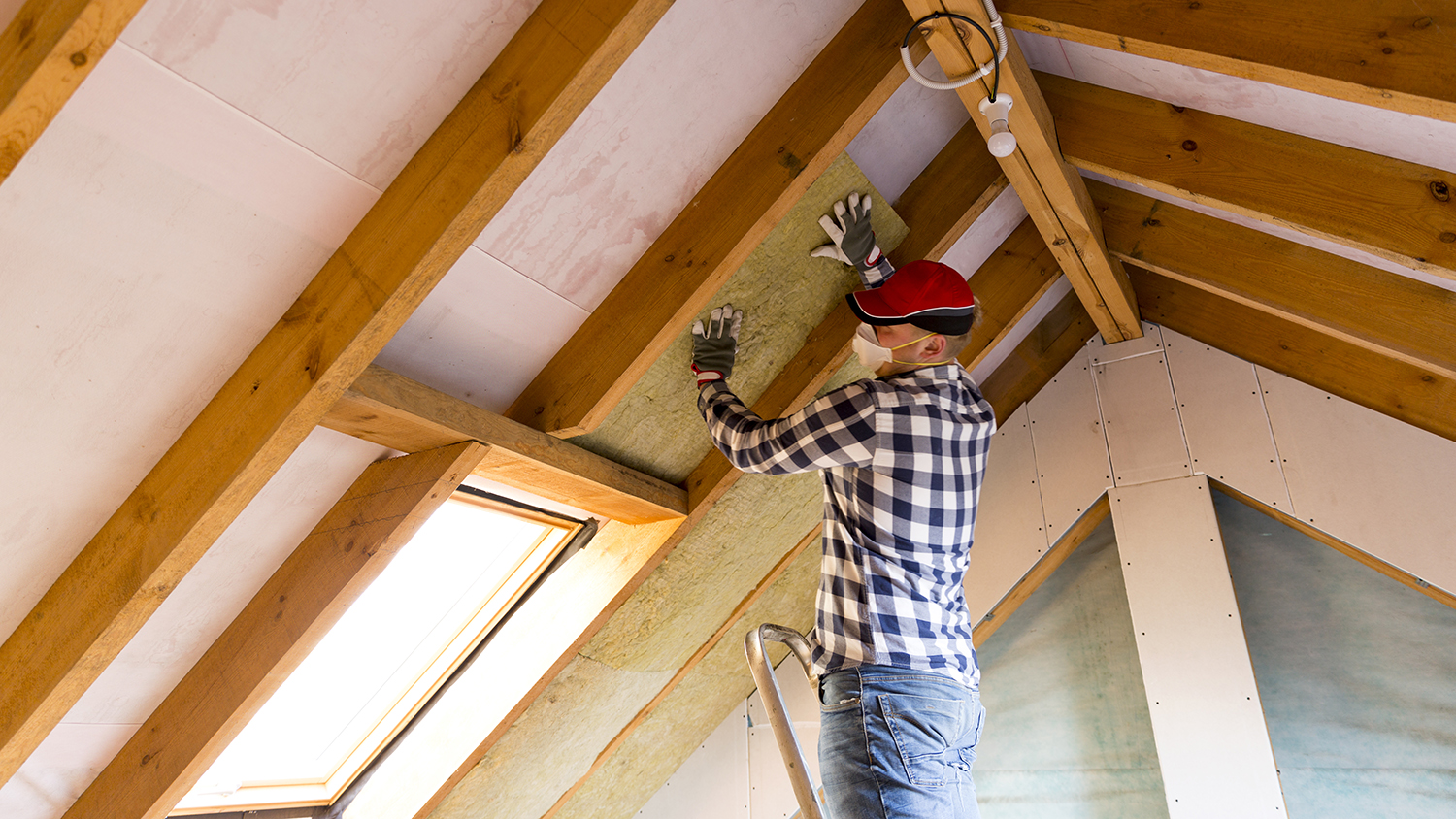
Insulating your attic can massively improve your home’s efficiency and reduce electric bills. Use this guide to find out what attic insulation will cost you.
Get ahead of the soaring temps and beef up your home insulation


It’s estimated that 90% of U.S. homes are under-insulated.
Proper insulation will save you money on heating and cooling.
The type of insulation you need depends on where you live.
Insulation probably doesn’t top your home maintenance to-do list, but it really should; according to the Insulation Institute, 90% of U.S. homes don’t have enough insulation. Proper insulation cuts energy costs and helps keep cool air inside. So before the summer heat kicks in, work with an insulation contractor in your area to learn how much and what type of insulation you need. You’ll sweat less—and save money.
Insulation is essentially a barrier that cuts down on the amount of heat that comes in on warm days and restricts the heat from leaving on cold days. Maximizing a house’s insulation is a perennially popular home improvement project because it saves money on heating and cooling costs.
“Insulation is one expense that you can actually see a positive return on investment,” says Bob Tschudi, Angi Expert Review Board member and general contractor in Raleigh, NC. “Once you compare your heating and cooling bills before and after adding insulation, you will recover your investment rather quickly.”
The first place you probably envision insulation is in your attic (for good reason, a lot of heat exchange occurs there). But to cool your home efficiently, you can add insulation to your HVAC ducts, walls, ceilings, crawl space, and floors. Because heat likes to take over cool spaces, you need insulation solutions to fill air gaps throughout your house, regardless of the season.
Because every house is different, you’ll have to consider a few factors before deciding how much insulation you need. Although some small insulation projects have DIY potential, consulting with an insulation contractor to help you calculate the amount and type of insulation you need is the best option.
The first lesson about insulation installation is R-value, or resistance to heat flow. The higher the number, the better the product resists the heat. The R-value is usually listed on the packaging—for example, R38.
Different climates need different R-value insulation. So, it makes sense that homeowners in chilly Maine need higher R-value insulation than those in steamy Florida. If you’re adding insulation in your attic, these are the R-value recommendations for a selection of states from EnergyStar.gov.
Zone 1: South Florida (R25–R30)
Zone 2: South Arizona, South Texas, Florida (R25–R38)
Zone 3: California, Alabama, South Carolina (R25–R38)
Zone 4: Virginia, Kentucky (R38)
Zones 5–8: Alaska, Maine, Wyoming, Ohio (R38–R49)
You’ve already seen how multiple factors affect how much insulation best cools your home, but if you want a general idea and like doing a bit of math, here’s the formula you need to calculate the area and determine how much insulation you need. Once you know the area, you can buy supplies accordingly.
Measure the height and width of each wall, then multiply the two numbers together to find the area of each wall. After, subtract the area of the windows and doors from the total area of each wall.
Height x Width = Total Area
Total Area - Area of Doors and Windows = Wall Area
Use the length multiplied by width formula to calculate the area of the floors that need insulation.
Length x Width = Total Area

There are several types of insulation. Your best choice depends on how much access you have to the area that needs insulation and if you use more of the same material or add another type.
Fiberglass blanket batts and rolls are affordable and used between wall studs, attic rafters, and floor joists. New construction homes often use rolls because the builder can add them before the drywall goes up.
Spray foam insulation covers hard-to-reach areas and fills gaps.
Blown-in or loose-fill insulation is helpful if the drywall or siding is already up.
Rigid foam insulation panels work well for ceilings, floors, and unfinished walls.
Reflective insulation is helpful in reducing downward heat flow and is primarily used in barns, workshops, and garages.
Radiant barrier panels insulate attics and unfinished walls in hot climates.
New construction homes likely have sufficient insulation, but after 10 years, some kinds of insulation (like the pink rolls you’ve seen in home improvement stores) need replacing because they settle and allow more air to follow. After an inspection, a professional installer can help you decide how much and which insulation to add.
Most homeowners add more insulation to their attic space, but you could also benefit from adding insulation to the ceilings, walls, and floors.
Because batt and roll insulation is affordable and easy to install, many homeowners choose this type of insulation. According to Angi data, nearly 44% of homeowners report installing batt and roll insulation in their attics. Other common insulation locations include inside walls and ceilings. Check out the most common places to install batt and roll insulation:
Proper insulation is just one part of the overall system to keep your home cool. You can max out your house’s insulation load, but if there are other inefficiencies in the house, you won’t have enough cool air. An excellent way to find trouble spots is to schedule an energy audit with a local HVAC professional. They’ll look for:
Outdated and unmaintained air conditioning equipment
Wrong size equipment for the house load
Dirty coils
Disconnected registers (ducts damaged or just fallen)
Low refrigerant
Air leaks in the ducts
Faulty thermostat
Cracks and spaces around windows and doors
Gaps in between the ceilings and attic (from vents or lighting fixtures)
From average costs to expert advice, get all the answers you need to get your job done.

Insulating your attic can massively improve your home’s efficiency and reduce electric bills. Use this guide to find out what attic insulation will cost you.

Discover roof insulation costs, including average prices, key cost factors, and expert tips to help you budget and save on your next project.

How much does a radiant barrier cost? Our guide breaks down prices by type of barrier and size of your attic space.

How much does it cost to insulate a wall? This guide breaks down the associated costs and variables to consider when setting your project budget.

Poor insulation in your house means a less comfortable living space and higher energy bills. Use this guide to diagnose issues with your insulation.

Proper insulation is a win for your home, health, and energy bills. Between rockwool and fiberglass, which insulation comes out on top? Let’s find out.